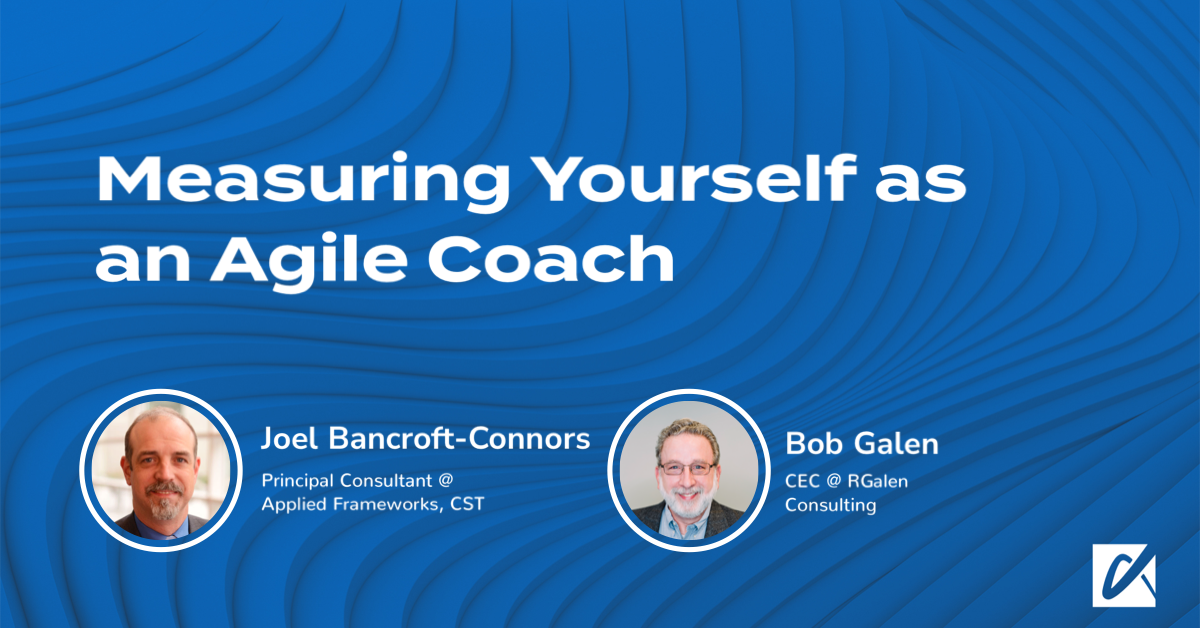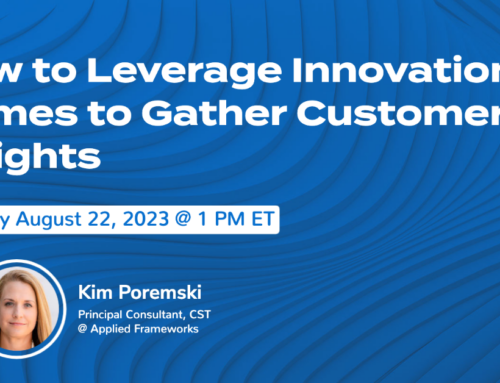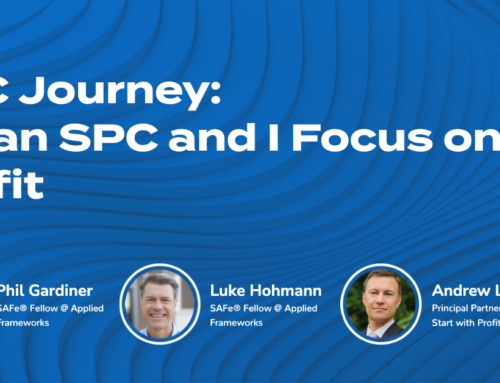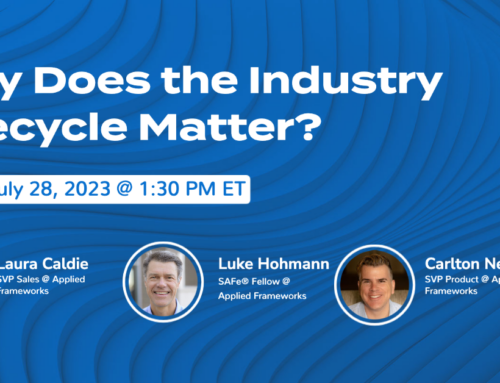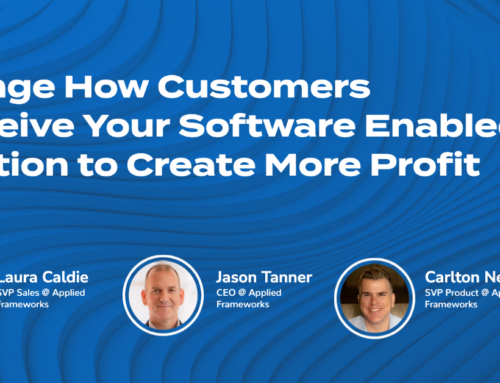Measuring Yourself as an Agile Coach – Watch the Recording!
What makes someone a REAL Agile Coach?
Some people think that spending some money and a few days in a workshop does the trick.
Then there are those that think Agile Coaching is all about the coaching stance.
Do you wonder if we need a better definition? After all 73,000+ people include the words “Agile Coach” in their title on LinkedIn.
But what separates the “coaches” from the REAL coaches?
As Agile has become mainstream and one of the dominant ways of doing work, we are finding defining what is an Agile Coach has become a lot harder.
The Agile Coaching Growth Wheel is an open-source project of experienced Agilists seeking to “Professionalize the World of Agile Coaching”. This ongoing project seeks to define what are the competencies involved in Agile Coaching and give a common way of measuring those competencies.
Check out the recording of a recent webinar hosted by CST, Joel Bancroft-Connors, one of the members of the Agile Growth Wheel initiative, and CEC Bob Galen, author of Extraordinarily Badass Agile Coaching, to learn about the wheel and take the self-assessment to figure out where you are personally on the Growth Wheel.
Are you interested in learning more? Please contact us to learn more about how our consultants can help your organization or Schedule a meeting with our Client Delivery Team.
Questions & Answers
Is an Agile Coach or Scrum Master only a custodian of process (which is Agile Way of Working) or do they need to have domain expertise of related products?
Joel: While domain expertise is helpful, it is not required. In fact, having too much domain expertise can end up being a hinderance. If you are not able to let go of the expertise, it can interfere with your ability to lean into your Agile Coaching skills. As an example, I was an art major in college and have never been a coder. I worked in Silicon Valley for 20 years quite successfully without the domain knowledge of technology. Since becoming an Agile Coach I’ve helped companies in industries ranging from Finance and Healthcare to Hardware and Sales.
Bob: I think you have to bring (something) to your Coaching/SM beyond simply “custodian of the process”. Examples of this could be: technical experience, business domain/product experience, scaling/change experience. I guess what I’m saying is that it’s important bring value outside of the process.
Could you please repeat the aspects around Technical Mastery – technical expertise as a software craftsperson?
Joel: Technical Mastery is no longer part of the core Growth Wheel. This is a recognition that Agile has grown beyond the software industry and you no longer need Technical Mastery to be an effective Agile coach. Technical Mastery has moved out to the edge of the wheel into Domain Knowledge. It is still useful, in the right settings.
Bob: If I recall the context of the discussion correctly, it was things like: design skills, coding skills, testing (unit, TDD, ATDD) skills, automation skills, architectural patterns, pairing, etc. Basically look at the Extreme Programming tactics/skills and then augment them with relevant technical stacks in your context.
Hi! Wondering how advising is different from mentoring?
Joel: Mentoring is a Neutral Competency. As a mentor you don’t have “skin in the game”. If your mentee doesn’t take your advice, you smile and move on. If you mentee messes up, you reach down and pick them up. Advising is an Active Competency based on Subject Matter Expertise. You have “skin in the game” in that your advice is causing a business to make a change and they are relying on your expertise when taking your advice.
Bob: I love the way Joel differentiates between them with Active vs Passive. I think having Skin in the Game is a thing that is missing from most/all of the stances and it needs to be there in specific contexts. Using the ACGW as the model, then that would be in the Leading and Advising stances!
How can we effectively use this for a career growth model from a Junior Scrum Master to a Senior Level Agile Coach?
Joel: Personally you can use the competency scales to create a learning path for growth. You can also partner with a mentor, coach, or manager to create that learning path. Check out this article, where I give my thoughts on different skill levels needed at different stages of career growth.
Bob: Plus 1 to everything Joel said. But I also want to provide a caution that the model wasn’t intended to serve as a baseline for hierarchical job structures, HR, and reward systems. It was/is intended as a (personal growth and continuous improvement) framework for a coach to grow themselves.
What is the biggest challenge in getting ‘stubborn’ people to leave behind their waterfall project practices that they are glued to?
Joel: Comfort and habit. When things get tough, we fall back on the comfortable and the habitual. To counter this, you need good support. When things do get tough, leadership and the coach need to lean in and give the team support and encouragement to stay the course.
It’s just like learning any new skill. If I want to run a marathon, and I pull a muscle in my first week, I might decide it’s not worth it and go back to couch surfing. If I have a coach/trainer there to help me through the challenge, I’m more likely to succeed.
What advice do you have for people who want to get a job in Agile Coaching as a career change? What have you seen an important to people hiring Agile Coaches?
Joel: Frameworks, Facilitation, Education
Focus on learning a framework (Scrum, Kanban, SAFe, etc.). And not just the mechanics. Understand the why, the theory, the experiments that have been done in the past.
Develop facilitation skills. This isn’t “running a good meeting”. This is about letting go of your agenda to help a team get to their desired goals. It’s about creating the space for others to be successful.
Learn how to teach concepts simply. You can’t just say “Do the Daily Scrum this way”, you have to be able to teach them how and why. Get the book “Training from the Back of the Room” or invest in the TBR training.
And lastly, certifications can help. If nothing else, it will get you past the recruiter check boxes. That said, you can use a certification journey as a learning path. For example, the Scrum Alliance has its certifications aligned from beginner up to guide level and can go a long way to getting you all the skills you need to be guide level competency in much of the wheel.
Bob: Plus 1 to everything Joel said.
But I would also focus on Self-Mastery, or your inside-out journey as an agile coach. For example –
Determine why you want to be a coach?
Do a skills assessment to see where your strengths & weakness line up with coaching competencies.
Then develop a growth plan and strategy to grow in appropriate areas.
Sometimes I have the feeling that after a few years (10+) the passion for the Agile Coach role is starting to vanish. What ideas or practices have you tried or can share to try to get that passion back?
Joel: The Agile Coaching Growth Wheel initiative is what gave me my passion back. Bringing the profession back to its roots while also connecting it to skills any modern leader needs to be successful has been a huge eye opener for so many I’ve spoken with. Leaders are starting to understand that to be successful they need to stop being managers and start being coaches.
Bob: You might have become “pickled” so consider the implications of that and perhaps look to make a change.
Get involved in the community and focus on self-care. Surrounding yourself with like-minded and appreciative others will often reignite or recharge your batteries.
Find a mentor and/or coach to help you explore what might be going on and establish some next step actions.
Also, check out this Self-Care Video.
How are you finding remote working vs face-2-face working and the aspect of team dynamics?
Joel: While remote work offers a lot of benefits (Zoom meetings in bunny slippers), the last two years have shown me that there are limitations to it. Even with the growth of amazing technologies, like Zoom, Miro, Mural, Slack, they can’t fully replace the benefits of in person. While I have been very successful in consulting and teaching remote, it takes more energy and time for both the coach and the teams. I don’t think we should go back to always in the office and I also don’t think we should go fully remote. We need to find a balance between the two and always remember that humans are visual people who need to see each other to have the best interactions. Check out our article on remote Agile team space.
Bob: I’m going to focus on how this difference impacts our agile coaching.
Before COVID, I felt that I was much more effective in face-to-face coaching and honestly avoided virtual coaching.
But COVID obviously disrupted that strategy and its forced me to become a much more effective virtual coach. AND, it’s improved various aspects of my coaching. For example, my observation and listening skills have improved drastically. My abilities and skills to facilitate virtual/distributed teams and events has sharpened as well.
It has also reminded me to be more intentional about things. For example, in relationship building.
Also consider this blog post about Coaching during COVID.
How does testing expertise map to the growth wheel? Have you seen people come from testing background into agile coaching?
Joel: Look up Lisa Crispin. She is the quintessential tester turned Agile Coach. She literally wrote the book on Agile Testing . Reach out to her on Twitter or LinkedIn, she’s very approachable.
Testing skill itself sits mostly in the Domain Knowledge, in that it is not required to be an effective Agile Coach. It can, however, give you a strong foundation to be highly effective in the right industries, just like Lisa has been.
Bob: I think it maps into Agile/Lean skills and technical skills. And, in m experience, it’s a wonderful background for Scrum Masters and coaches.
In my view the assessment is important but we need to spend good time in understanding what the competency is before we assess ourselves? Can Bob comment on that. Is that a right assumption?
Joel: Correct! You will see that each Competency Area has its own descriptions and knowledge. The assessment isn’t about checking boxes to say “I did it”, it is about being introspective and challenging yourself, “do I really have this skill”.
Bob: Yes!
How can a coaching team use the coaching wheel to self assess and then compare to see if we have a well rounded team of competencies?
Joel: This almost begs a blog article of its own.
Start with knowing what you need. Assess the organization, the product, the work to be done and create a list of the skills and knowledge that will be needed to get there. Align that the the Growth Wheel (don’t forget the Domain Knowledge outer ring). Decide how much experience you need in these skills and knowledge (Dreyfys scale). Then do peer reviewed self-assessments and map those to the Wheel. You’ll be able to see where you have gaps as well as who might be able to best fill that gap or if you really need someone else.
Bob: First, I might suggest an individual-focused assessment and learning journey for a bit. Establishing a baseline and personal growth plan for each coach.
Then I would invite (not tell or prescribe) folks to consider sharing their results for–mentoring, skills balancing, team balancing, transparency, pairing opportunities, etc.
How can the depth in understanding of DevOps processes and tools help a coach to build credibility and trust for improving team performance? #technicalmastery
Joel: Having a deep expertise in any subject gives you a certain “starting credibility”. However, to effectively build trust, in an Agile Coaching situation, you need to be able to let go of your own expertise and learn to listen. For me, the hardest part of becoming an Agile Coach was letting go of what I knew, what I wanted.
Bob: It’s a connundrum. As Joel mentioned, expertise of any sort can help you build relationship, trust, and rapore with your clients. But at the same time, it’s a slippery slope because…
As an agile coach of any sort, you don’t OWN the performance improvements, your clients do. It’s counterintuitive, but the more YOU do, the less effective a coach you are. At lease IMHO.
I coach clients externally and I often find myself having to explain what agile coaching is, the measures of success and why it’s important. How do you navigate this?
Joel: Metaphors and analogies are my go to tool for this.
– “The New England Patriots won the Super Bowl. They are clearly the best there is. They don’t need coaches anymore, do they?”
– “You are an expert in financial models, that’s your focus. Would you expect your marketing person to be an expert on it? Conversely, do you need to be an expert on marketing lead generation like your marketing person is? Agile coaches are experts in things like team dynamics, organizational design, flow efficiency, getting to done. You could take the time to learn these things, at the cost of time to get better at financial models, or you can hire an expert in these areas so you can focus on what you need to focus on.”
Bob: I find this to be normal in my own coaching. That is, one of the first things I do with new clients is try to explain to them my role as an agile coach, what I do and don’t do, what the stances are, their role in the dynamics (agenda, goals, owning the results or co-owning the results).
I think this is an important step that many agile coaches skip…preferring to dive-in and begin coaching.
Ethics discussions might also be a part of it. Here’s an example from my own practice.
Are you interested in learning more? Please contact us to learn more about how our consultants can help your organization or Schedule a meeting with our Client Delivery Team.

